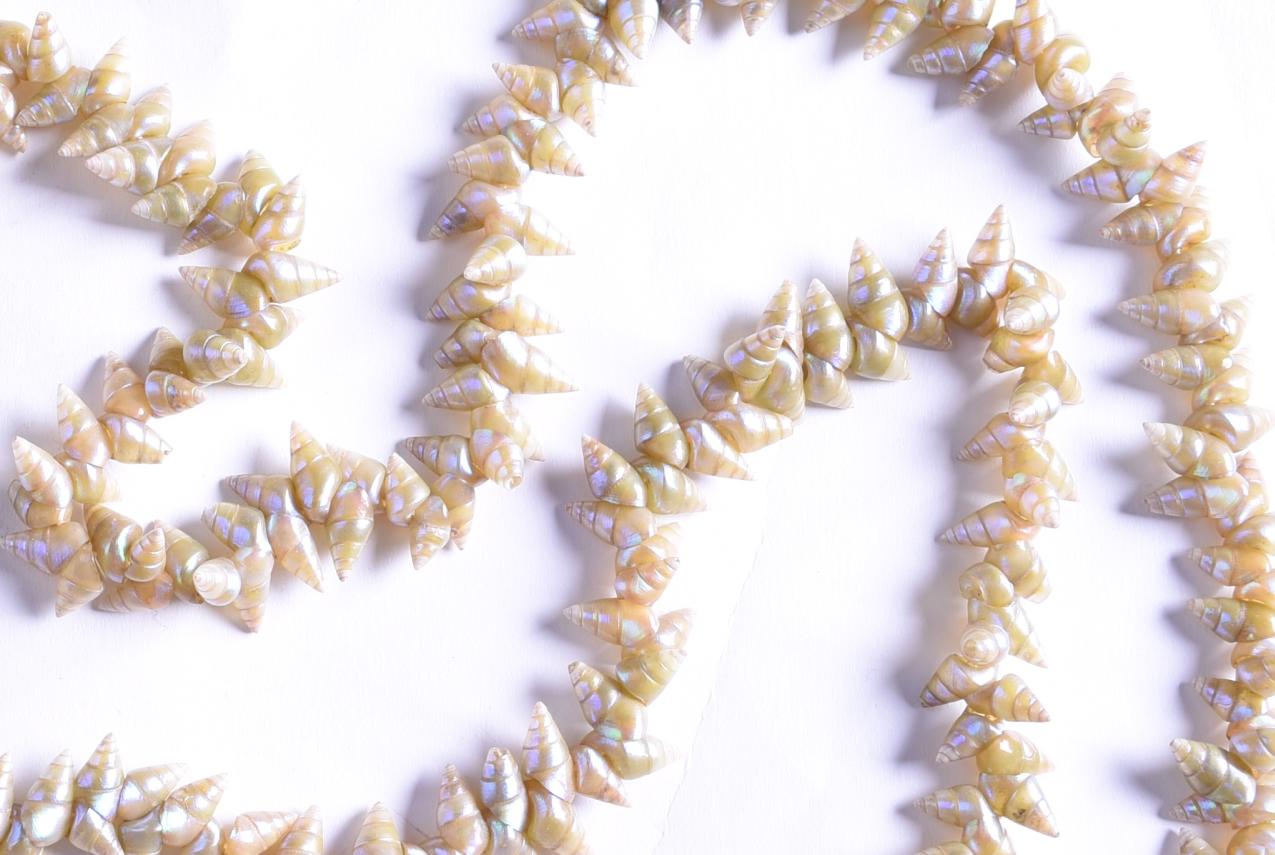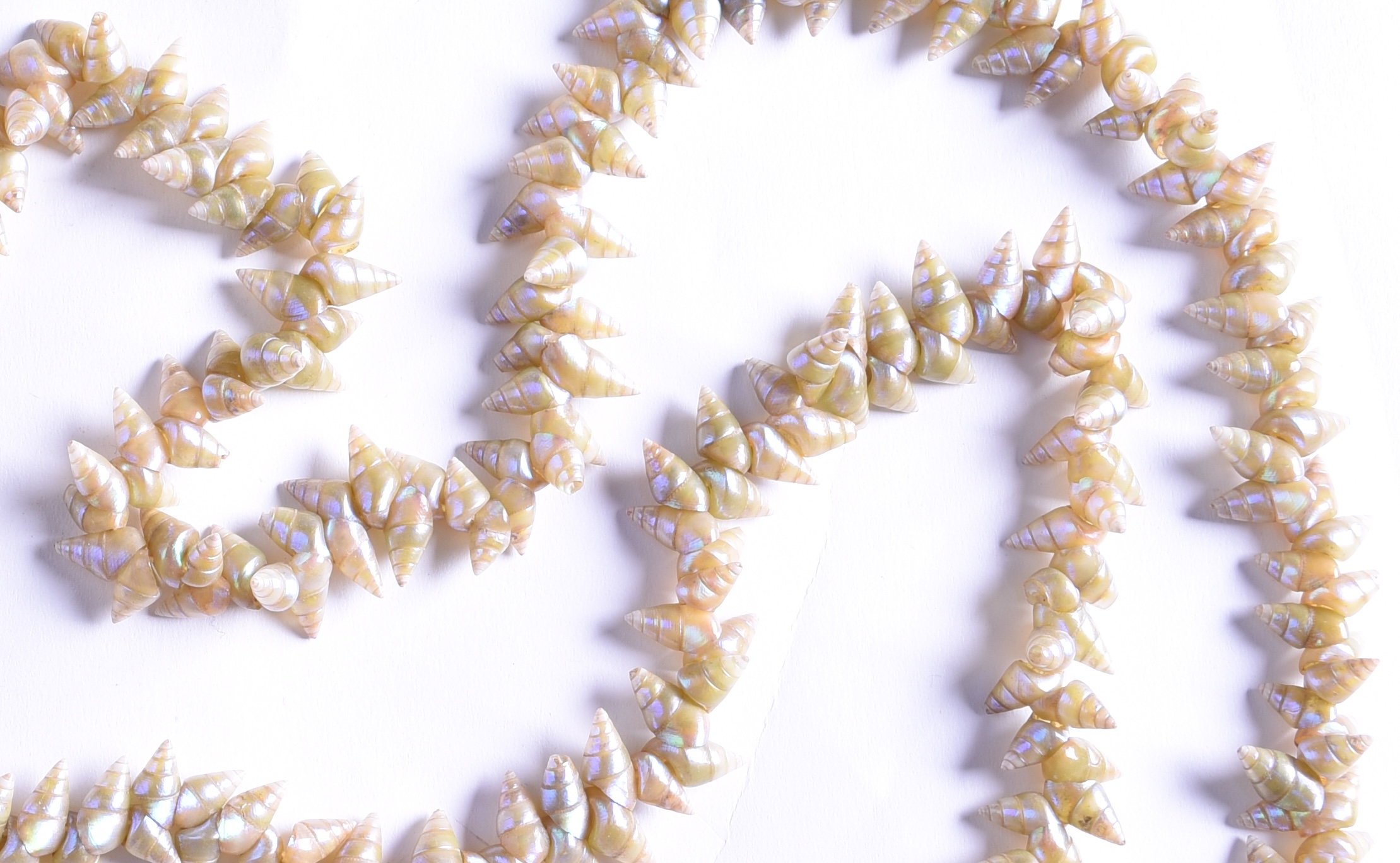This delicate necklace, part of the Cook Collection, arrived at the Western Australian Museum in 2013 — but it brought more questions than answers.
Where did it come from? Who made it? And how did it end up in Albany in the 1800s?
All the History team knew for certain was that it once belonged to Sophy Hassell, who was born in Albany in 1879. It may have been acquired by her grandfather, Captain John Hassell, during a sea voyage from Van Diemen’s Land in the 1830s–1840s. Colleagues in Anthropology and Archaeology first identified that his necklace looked like an Aboriginal artefact, but not from Western Australia.
Members of our Aquatic Zoology team identified the shells as maireener (rainbow kelp) — the most common shell used in Tasmanian necklaces.
Deakin University research supported the Museum’s suspicions: this was likely a Palawa stringed shell necklace.
Pakana (Palawa) woman Theresa Sainty, who has researched and worked with Palawa shell stringers in Lutruwita (Tasmania), viewed the necklace during a visit to Perth.
After a close look and feel, Theresa confirmed the iridescent brown shells were maireener and the necklace was likely made by a Palawa woman.
She explained that it’s difficult to pinpoint the necklace’s exact origin in Tasmania, as styles were similar across the islands — especially after Palawa people were displaced during colonisation.
Shell stringers were also taken by sealers and ships to places as far away as Kangaroo Island and Mauritius, meaning necklaces could travel widely.
Unassuming at first glance, this necklace carries a history stretching across eras, oceans, and cultures.
Hidden treasures like this provide an opportunity to privilege Aboriginal cultural knowledge, once lost in the process of collecting these objects, offering us a richer, shared window into the past.

